Give Save Spend Banks – the best choices out there, plus a free printable to help make your money jar actually teach your child money lessons.
Have you or your child ever wondered where all their money went?
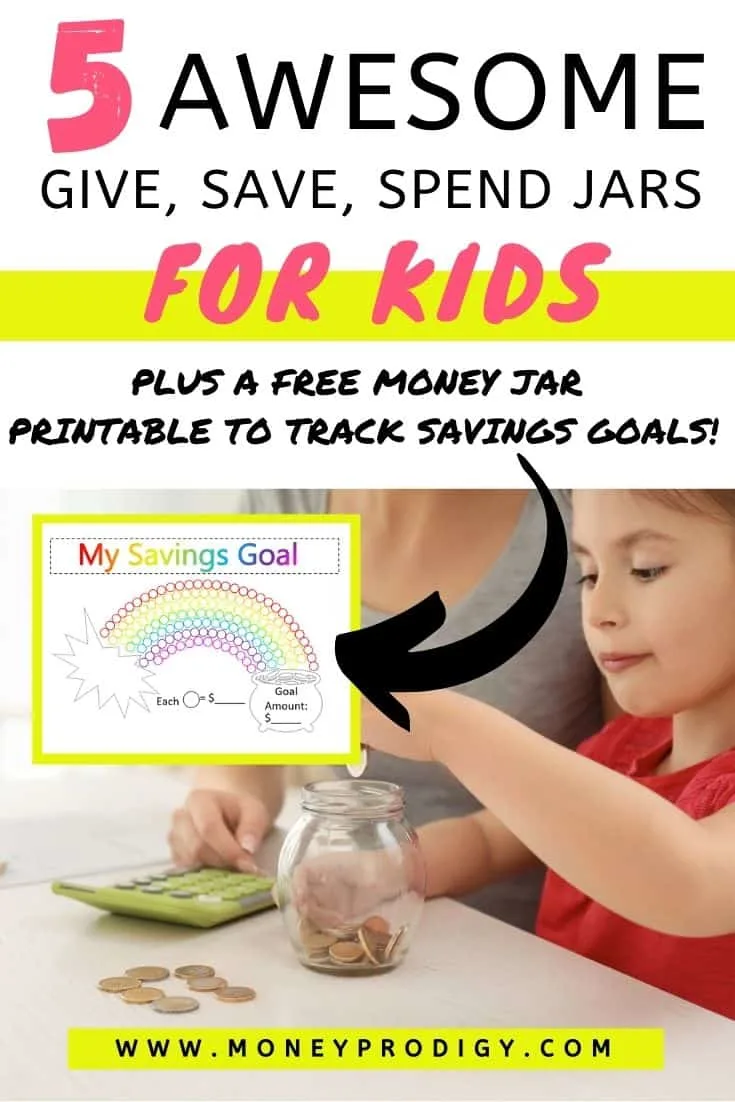
Or worse yet, do you find money just crumpled up in a ball on their bedroom floor (yes, actual parents have told me their kids do this)?
Kids need a space to store their money – it's one of the easiest ways to encourage kids to save money (besides one of these printable money-saving challenges for kids).
Sure, some of their birthday money and earned money ends up in their savings or a checking account (no Mom-shame here if you haven’t opened up a savings account for your child yet. Doing it now sure beats doing it a year from now!).
But what happens to the rest of their money?
I know sometimes it feels like it gets eaten up by gremlins (perhaps the same that seem to be haunting your own wallet), but I’ve got a way for you and your child to keep better track of what’s coming in and going out.
Best Give Save Spend Banks
Give-Save-Spend banks, money jars, and money boxes give your child a way to categorize their money beyond just “mine”.
In other words, they start to categorize their money by things they want to spend it on (a savings goal is born!), money they want to donate (here are activities to teach giving), and money they’re setting aside for long-term savings (think: first car, college textbooks, or first apartment).
It's the save-spend-give-money management strategy for kids.
So, what makes a good spend-save-share piggy bank (at least from the perspective of someone who teaches kids about managing their money)?
A good Give-Save-Spend Bank:
- Is clear enough that kids can see their money grow in it
- Offers a place where kids can write down their goal for the money in it, either on a printable or on the jar/bank itself – this could be a savings goal, or a spend-save-give ratio/percentage
- Is easy for kids to get their money back out so that they can spend it/use it on what they intended to when the time comes
Because of all of this, I created my own give-save-spend bank plus a free printable to go with it (so hang on until the end, when I go over how to put yours together).
First up, let’s look at a few of the best give-save-spend banks out there.
Psst: you'll also want to check out this article on how to save money as a child.
1. Moonjar Three-Part Moneybox
Suggested Age: 3+ months
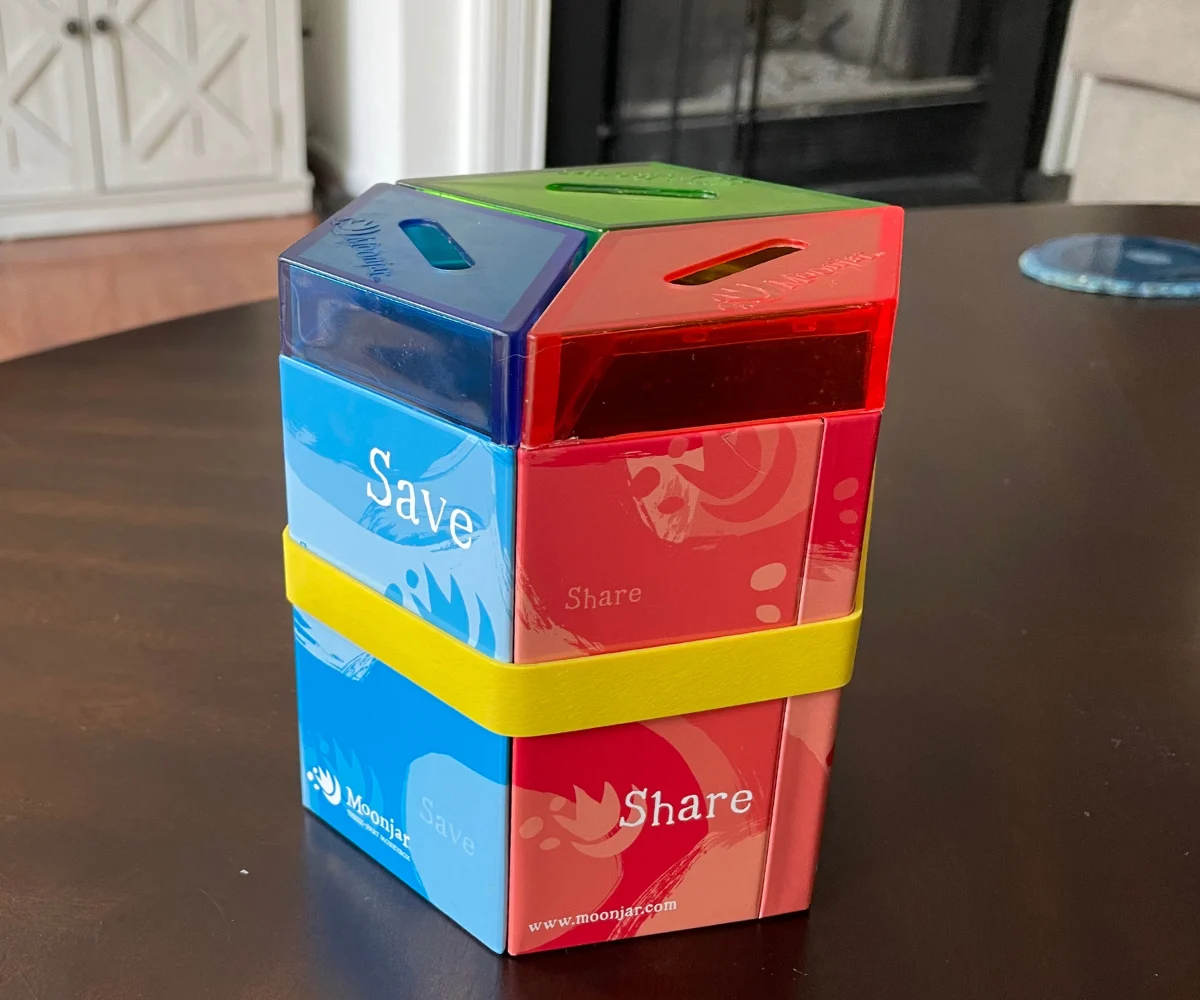
I have one of these at our home (for my 4-year-old – getting him started early!), and here’s what I like about it:
- The three banks are semi-clear, enough so that you can see how high the money is in there.
- The slots are large enough that they can bend their dollars and stick them in there (instead of having to open them up to put bills in).
- It comes with a mini-passbook where kids can track what they put into the jar, and what they take out (and do the calculations by hand, like in a checkbook passbook).
What I’m not as excited about:
- There’s nowhere for kids to write on the money jars themselves what percentage goes into each, or how far they are towards reaching a goal. Note: you can write a percentage ratio to put into each jar on The Standard Moonjar, which is a foldable version.
- There’s no slot for investing. This is fine for younger kids, but you might be looking for that fourth slot.
2. The Piggy Box
Suggested Age: 4+ years
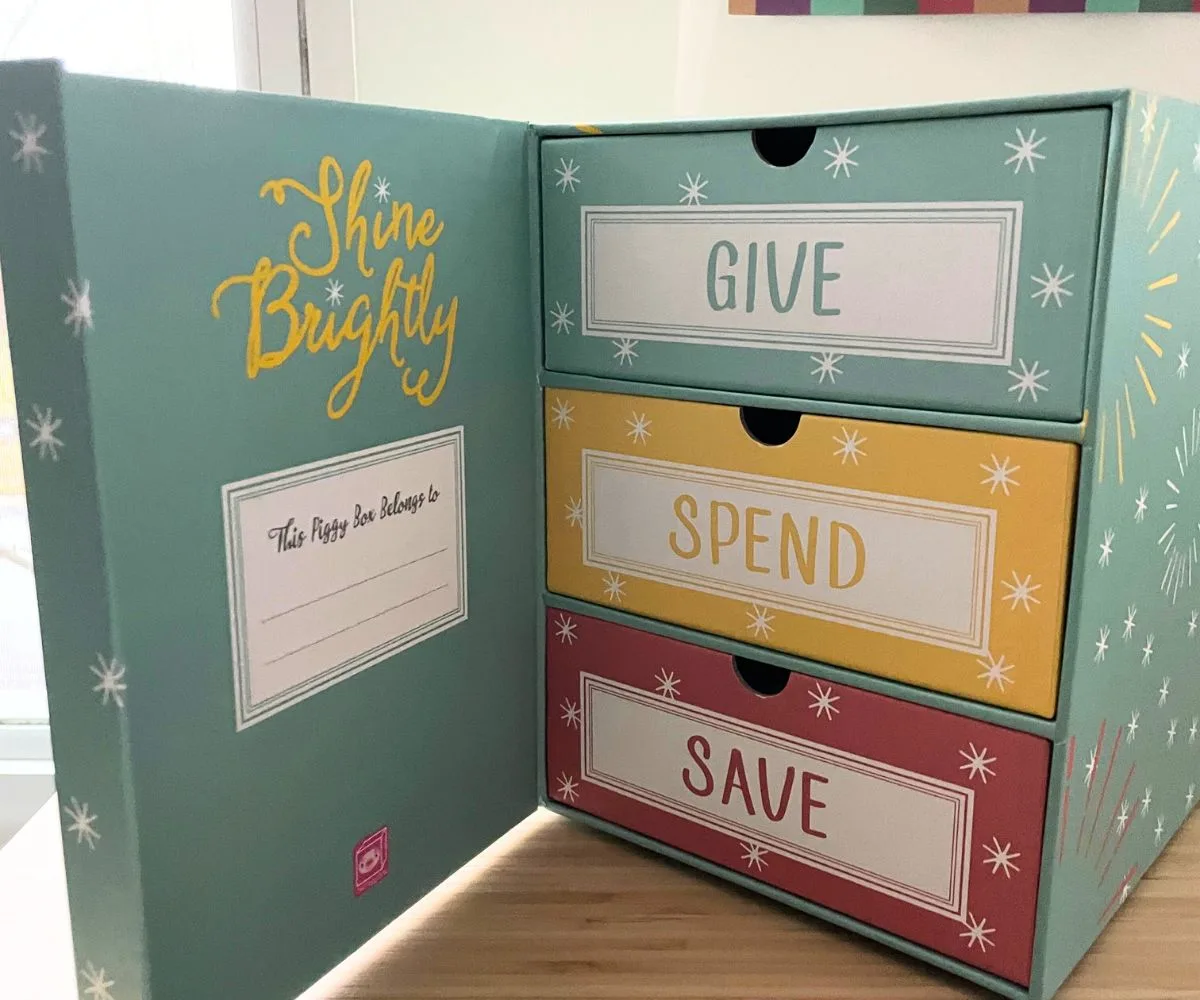
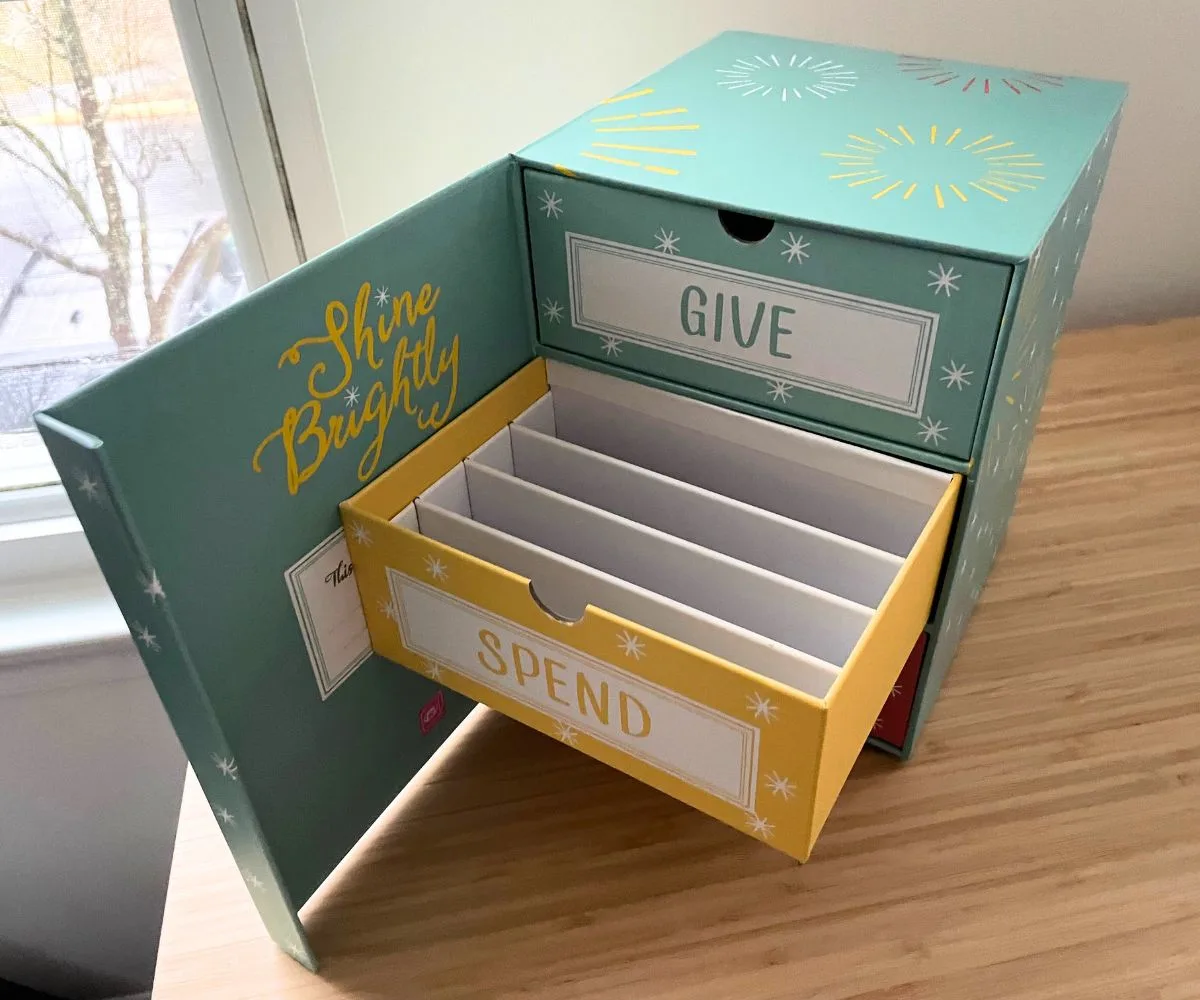
What a unique-looking piggy bank!
What I like about this money box:
I was delighted to receive a sample of this one in the mail, as it's really cute, completely different from other variations out there, and very sturdy.
While this one is not clear to see the money that a kid is saving up, it does have easy-to-open drawers for each of three categories:
- Give
- Spend
- Save
The drawers and slots in each drawer are very high-quality cardboard. There are both coin slots for the back part and cash slots for bills in the front of each drawer.
And there's a free App (iOS only) to help kids track the money in their piggy bank.
What I'm not as excited about:
Again, this is not a see-through piggy bank so that kids can immediately see their money accumulating. However, with this piggy box, it's pretty easy to open the drawer and see the money that way.
3. Money Savvy Pig
Suggested Age: 4 – 11 years
I gifted one of these save-spend-donate-invest piggy banks to my niece and my nephew about 5 years ago.
We were on a weekend trip together, so I also took the time to sit down with them to talk about what each slot meant.
What I like about these:
- It includes the normal save, spend, and donate slots – but it also has a slot for investing. That opens up a whole ‘nother can of money-topic-worms you can talk about with kids!
- Each compartment is separate and has a separate plug on the bottom to open up and get the money out.
What I’m not as excited about:
- I found it a little too challenging to get out the money from a particular slot. Maybe that’s a good thing?
- No area to write down or track how much money is in each slot, nor what percentage your child should be setting aside from their money for each spending priority (save, spend, donate, invest).
Psst: here’s my list of 21 unique piggy banks for kids.
4. Smart Piggy Trio Bank
Suggested Age: 4+ years
Here's a cute, 3-compartment piggy bank. They've got slots on the top, and can fit nicely on a kid's bookshelf (they look kinda bookish anyway, right?).
What I like about this:
- You can open each box and easily get to the money when it's time to spend it (hidden magnets keep the boxes closed otherwise).
- Stylish! They're super cute.
- Nice alternative to glass or plastic (it's cardboard), and it's quite sturdy – like a board book.
What I'm not as excited about:
- There is an area to write down deposit and withdrawal amounts…but it's on the inside of the box's flap (so you won't see it unless you take it apart), and it's a small space.
- It's not clear, so kids can't see their money grow (or decrease as they take it out) without taking it apart.
5. Wise Owl Teaching Bank
Suggested Age: 3+ years
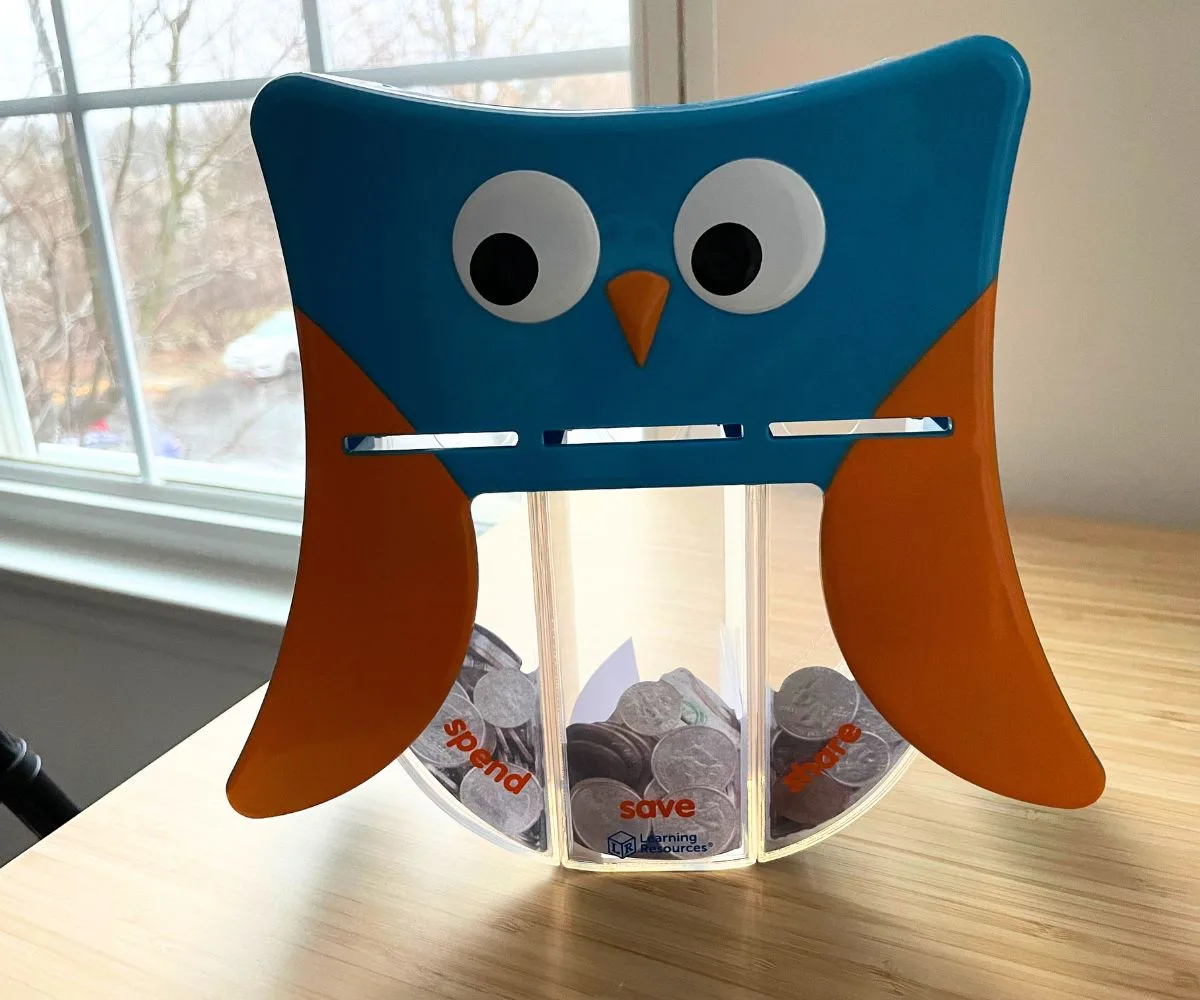
This piggy bank (or really, owl bank!) is super cute and great for younger kids (suggested age is 3+ years).
There are three slots labeled spend, save, and share.
On the back of it, your child can either decide where their coin or bills go into, OR, they can just plunk the coins down in the top slot and, like Plinko, see where it ends up (if you're into paying your young kids for chores, then this could work nicely as it's a thrill to put the coin in!).
Kind of fun for a youngster!
It comes with a very, very short activity guide (really, a conversation and suggestion guide that’s a few paragraphs long).
What I like about this:
- It’s plastic, so younger kids (and kids in general) won’t be able to accidentally smash it into a gazillion pieces.
- Each slot is clear, so a child can easily see the money accumulating.
- Each plastic slot easily slides out of the back for when it’s time to spend the money in it.
- I actually like the “randomizer” option on the back to plunk your coins into. Because I think as young kids, you’re more concerned with getting them interested in money and having a space for them to store theirs, and less concerned about specific money goals.
What I’m not as excited about:
- I think this is great for younger kids, so I wouldn’t buy for, say, 7 or above. Nothing wrong with that, just wanted to mention it!
- The “activity guide” it says it comes with is just a few paragraphs and a few suggestions. It could definitely be expanded upon.
Now, let’s move on to my own idea!
Save-Spend-Give Jars Plus Give-Save-Spend Printable
As a Certified Financial Education Instructor determined to help parents teach their kids how to manage money…I have to confess something:
I have a love-hate relationship with The Money Jar.
You know – people giving their kids give, spend, save jars (basically, three mason jars, one for money to give away, one for money to spend, and one for money to save).
It's HUGELY popular, but what bugs me is it doesn't go far enough to help kids actually learn how to manage money.
For starters, the kids don't know how much money is actually in the jar.
Which isn't too helpful.
Granted, it's clear and see-through so that helps some. But is there $5.00 in there, or $30.00?
No clue – especially since kids aren’t great at valuing money yet, anyway.
And while they go so far as to divide it up by Give, Spend, Save – which is helpful –it's usually based on a parent’s priorities. In other words, the parents are the ones who feel good about having their kid contribute a certain percentage or amount to each jar, and by doing this, they feel like their kids are learning how to manage money.
SOOOOOO, I came up with an idea 6-8 months ago to add a label to the outside of one of these jars to turn it into a meaningful savings goal jar instead.
6. Money Jar with Coin/Bill Slot and Money Jar Stickable Printable
Just grab any set of pint-sized (32 oz.) mason jars that you would like – the one I’ve suggested has a cool lid with a money slot already in it.
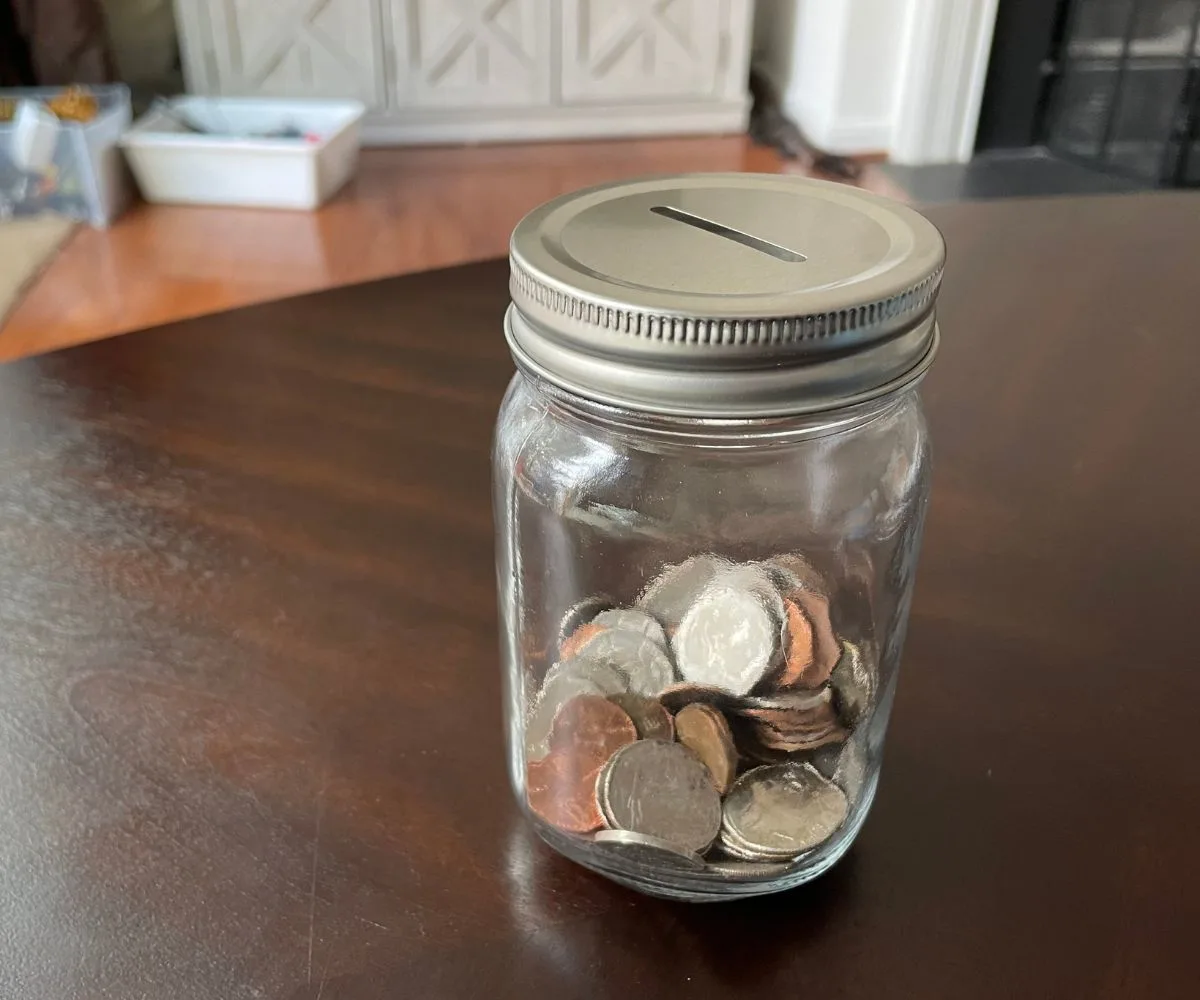
Your child can give each of the jars a purpose, which helps them express their own priorities as far as money is concerned (as well as family priorities – you certainly get to shape and talk with them about their spend-save-give ratios and savings goals).
Then, use these free give-save-spend money jar printables I created – I’m calling them Money Jar Stickables – and stick them on the outside of their jar.
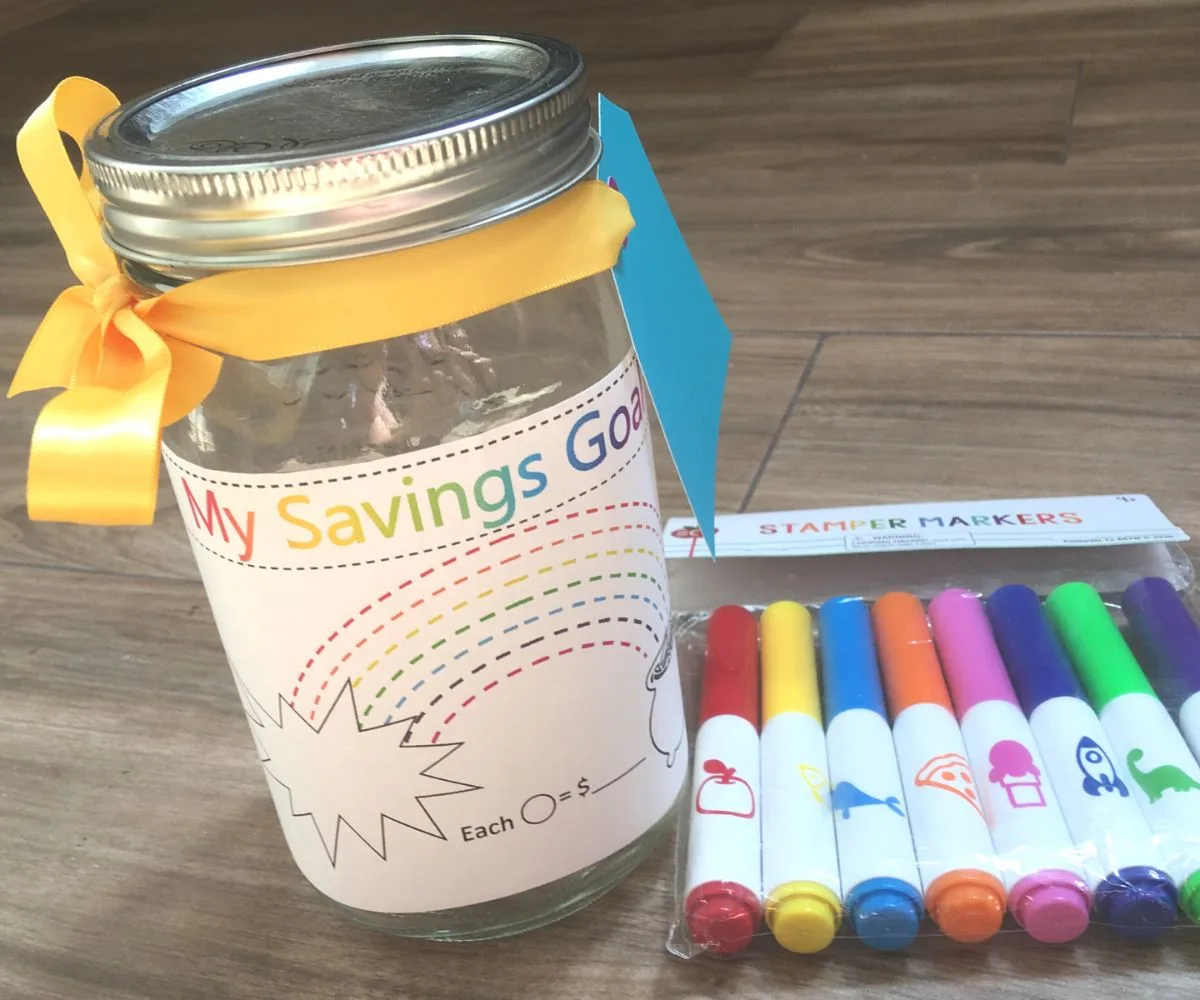
I’ve made it so that it fits a 4” X 6” label perfectly (the size that fits a pint-sized, 32-oz. mason jar), and you can get a set of those here. OR, you can print it out, cut it out, and then tape it to the outside of each jar.
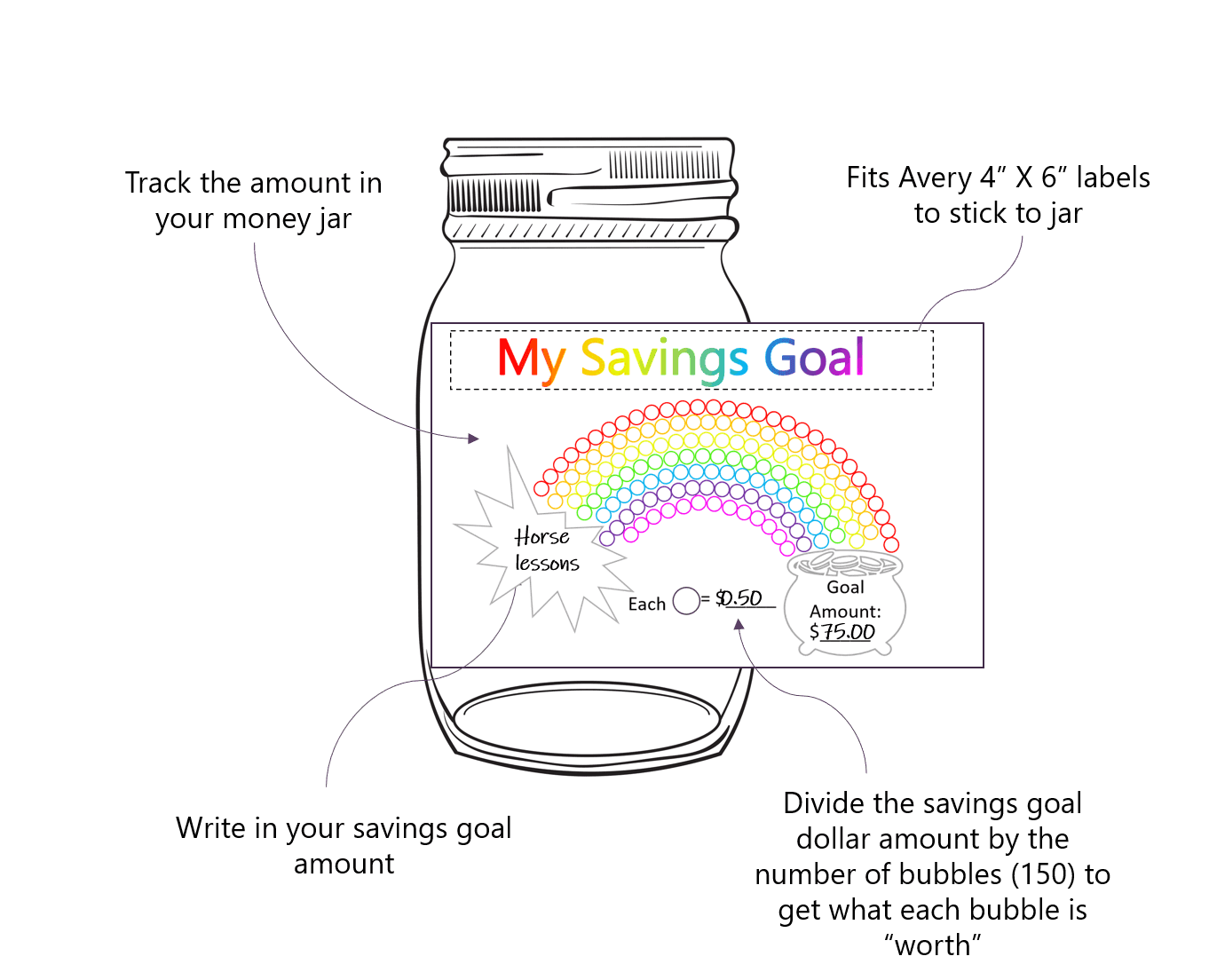
Bonus: these labels will peel off and remove cleanly when their savings goal or charitable goal is done!
Steps to use them:
- Print out onto the 4” X 6” labels, or regular paper (you’ll need to cut and tape it onto the jar).
- Figure out what your child’s goal is for a jar, and write that onto the label.
- Figure out what each marker dot or space is worth on the stickable by working backward from the saving goal to calculate it. For example, if their goal is to save $50 to buy a video game, and there are 100 spaces on the money jar stickable, then they would divide $50 by 100 and see that each space is “worth” $0.50. They get to color in a space for every $0.50 they put into the jar. And when it’s all colored in? They’ll have reached their goal – time to spend.
- Pick out colors that you want to use for them to mark each space. You can also use this set of stamp markers – they’re kind of cute!
- When you meet the money goal (by coloring each space in ‘til the end), then it’s time to actually make the purchase.
- Start over, with a new label, and a new money goal!
What I like about this idea:
- These labels can peel off, so you can repurpose each jar for a specific category, savings goal, etc. as your child ages.
- The top easily comes off, so that you can access your money when it comes time to spend it.
- Glass jars are clear, so your child can see the money accumulated inside of them.
What I’m not as excited about:
- It’s glass, so your child could break them at some point.
Which give-save-spend banks you choose for your kid is up to you. Just remember to include some of the tips and free money jar printable from above to turn the plain ol' money jar into a savings goal your child will learn lots of money lessons.
Amanda L. Grossman
Latest posts by Amanda L. Grossman (see all)
- 50 Banking Activities for Kids (Student Financial Literacy) - February 14, 2024
- 14 Christmas Activities for High School Students (they’ll Actually Find Cool) - December 1, 2023
- 3 Fun Selfie Scavenger Hunts for Teens (Christmas, Fin Lit, etc.) - November 27, 2023
